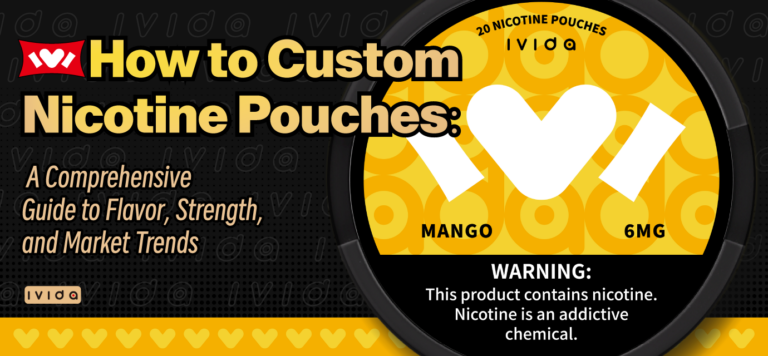The Nicotine Pouches Industry: Adapting to a New Regulatory Era
In recent times, nicotine pouches have emerged as a favored substitute for traditional smoking, attracting those seeking a potentially less harmful way to consume nicotine. The popularity of high-strength variants, in particular, has soared, providing users with a discreet and impactful nicotine experience. This growth, however, has not gone unnoticed by regulators, leading to a significant shift in the industry’s landscape.
Regulatory Revolution
This year has witnessed a profound transformation in the regulatory environment. Governments globally are tightening their grip to safeguard public health and ensure fair business practices. For nicotine pouch manufacturers, this means enhanced scrutiny in production, marketing, and sales.
In the European Union, new packaging regulations have been introduced. Nicotine products must now be presented in plain, standardized packs, reducing their visual appeal to younger consumers. While production regulations for pouches are still evolving, it’s clear that more stringent measures are on the way.
The United States is also taking a firm stance. The FDA has implemented a mandatory pre-approval process for nicotine pouch marketing and production. Companies are now required to provide comprehensive data on product safety and efficacy, a significant hurdle for many in the industry.
Taxation Tensions
Taxation has become a major point of contention. Governments see nicotine pouches as a lucrative source of revenue, leading to increased tax rates.
In the UK, a tiered tax system based on nicotine content has been introduced. Lower-strength pouches are taxed at a lower rate, while higher-strength variants face a substantially higher levy. This approach aims to encourage consumers to opt for less potent products, potentially reducing overall nicotine consumption.
In the US, states like California and New York have imposed taxes on nicotine pouches, with rates reaching up to 12.50% of the retail price. The impact has been significant, with sales of higher-strength pouches particularly affected.
Sweden, with its history of snus consumption, has also adjusted its tax policies. Nicotine pouches are now subject to a tax model similar to traditional tobacco products, with additional charges based on nicotine content.
Marketing Constraints
Marketing nicotine pouches has become increasingly complex. Social media and influencer marketing, once popular promotional channels, are now heavily restricted.
Advertisements must feature models aged 25 or older and clearly state this fact. Additionally, claims of health benefits over smoking must be backed by robust scientific evidence. This has forced companies to rethink their marketing strategies, focusing on product features and quality rather than unsubstantiated health claims.
Sustainability Push
The industry is also feeling the pressure to adopt more sustainable practices. With bans on single-use plastics and a growing focus on the circular economy, companies are exploring alternative packaging materials and recycling programs.
This shift not only aligns with environmental goals but also appeals to the growing number of consumers who prioritize sustainability. By investing in eco-friendly initiatives, companies can enhance their brand image and gain a competitive edge.
Business Resilience and Innovation
For businesses in the nicotine pouch industry, these changes present both challenges and opportunities. While compliance costs can be significant, they also drive innovation and the development of safer, more sustainable products.
To succeed, companies must stay informed about regulatory changes, invest in research and development, and build strong relationships with regulators. Transparency in marketing and consumer education is also key, helping to build trust and loyalty.
The Road Ahead
The nicotine pouch industry is at a crossroads. While regulatory changes and market pressures pose challenges, they also offer the potential for growth and transformation.
By embracing innovation, sustainability, and compliance, companies can position themselves for success in this evolving market. The future of the industry will depend on its ability to adapt and meet the changing needs of consumers and regulators alike.
In conclusion, the nicotine pouch industry is entering a new era of regulation and sustainability. While the road ahead may be challenging, it also holds great promise for those willing to innovate and adapt. As the market continues to evolve, businesses must stay vigilant and embrace change to thrive in this dynamic landscape.







-qwpax3rd2nto0i9lm3wb0nde9r42qenn9so2lk7sb4.png)